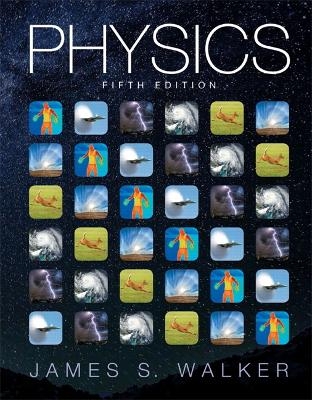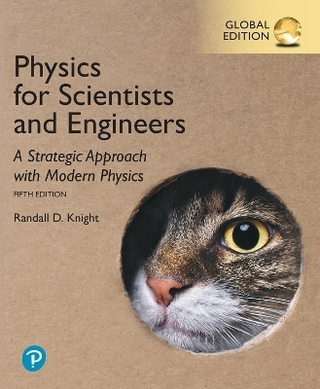
Physical Properties of High–Temperature SuperConductors
John Wiley & Sons Inc (Hersteller)
978-1-118-69664-4 (ISBN)
- Keine Verlagsinformationen verfügbar
- Artikel merken
Rainer Wesche Ecole Polytechnique Federale de Lausanne (EPFL), Centre de Recherches en Physique des Plasmas (CRPP), Switzerland
About the Author Series Preface Preface Acknowledgement List of Tables Nomenclature Chapter 1 Brief History of Superconductivity 1.1 Introduction 1.2 Milestones in the Field of Superconductivity Chapter 2 The Superconducting State 2.1 Introduction 2.2 Electrical Resistance 2.3 Characteristic Properties of Superconductors 2.4 Superconductor Electrodynamics 2.5 Thermodynamics of Superconductors Chapter 3 Superconductivity: A Macroscopic Quantum Phenomenon 3.1 Introduction 3.2 BCS Theory of Superconductivity 3.3 Tunnelling Effects Chapter 4 Type II Superconductors 4.1 Introduction 4.2 The Ginzburg-Landau Theory 4.3 Magnetic Behaviour of Type I and Type II Superconductors 4.4 Critical Current Densities of Type I and Type II Superconductors 4.5 Anisotropic Superconductors Chapter 5 Cuprate Superconductors: An Overview 5.1 Introduction 5.2 Families of Superconductive Cuprates 5.3 Variation of Charge Carrier Density (Doping) 5.4 Summary Chapter 6 Crystal Structures of Cuprate Superconductors 6.1 Introduction 6.2 Diffraction Methods 6.3 Crystal Structures of Cuprate High-Temperature Superconductors Chapter 7 Empirical Rules for the Critical Temperature of Cuprate Superconductors 7.1 Introduction 7.2 Relations between Charge Carrier Density and Critical Temperature 7.3 Effect of the Number of CuO2 Planes in the Copper Oxide Blocks 7.4 Effect of Pressure on the Critical Temperature 7.5 Summary Chapter 8 Generic Phase Diagram of Cuprate Superconductors 8.1 Introduction 8.2 Generic Phase Diagram of Hole-Doped Cuprate Superconductors 8.3 Summary Chapter 9 Superconducting Properties of Cuprate High-Tc Superconductors 9.1 Introduction 9.2 Characteristic Length Scales 9.3 Superconducting Energy Gap 9.4 Magnetic Phase Diagram and Irreversibility Line 9.5 Critical Current Densities in Cuprate Superconductors 9.6 Grain Boundary Weak Links 9.7 Summary Chapter 10 Flux Pinning in Cuprate High-Tc Superconductors 10.1 Introduction 10.2 Vortex Lattice 10.3 Consequences of Anisotropy and Intrinsic Pinning 10.4 Thermally Activated Flux Creep 10.5 Irreversibility Lines 10.6 Summary Chapter 11 Transport Properties 11.1 Introduction 11.2 Normal-State Resistivity 11.3 Thermal Conductivity 11.4 Summary Chapter 12 Thermo-Electric and Thermo-Magnetic Effects 12.1 Introduction 12.2 Thermoelectric Power of Cuprate Superconductors 12.3 Nernst Effect 12.4 Summary Chapter 13 Specific Heat 13.1 Introduction 13.2 Specific Heat at Low Temperatures 13.3 Specific Heat Jump at the Transition to Superconductivity 13.4 Specific Heat Data up to Room Temperature 13.5 Summary Chapter 14 Powder Synthesis and Bulk Cuprate Superconductors 14.1 Introduction 14.2 Synthesis of Cuprate Superconductor Powders 14.3 Bulk Cuprate High-Tc Superconductors 14.4 Summary Chapter 15 First- and Second-Generation HTS Wires 15.1 Introduction 15.2 First Generation High-Tc Superconductor Wires and Tapes 15.3 Second Generation of High-Tc Superconductor Tapes Chapter 16 Cuprate Superconductor Films 16.1 Introduction 16.2 Film Deposition Techniques 16.3 Multi-layers of Ultra-thin Films 16.4 Strain Effects 16.5 Summary Chapter 17 MgB2 An Intermediate-Temperature Superconductor 17.1 Introduction 17.2 Physical Properties of MgB2 17.3 MgB2 Wires and Tapes 17.4 MgB2 Bulk Material 17.5 MgB2 Films 17.6 Summary Chapter 18 Iron-Based Superconductors A New Class of High-Temperature Superconductors 18.1 Introduction 18.2 Critical Temperatures of Iron-based Superconductors 18.3 Crystal Structures of Iron-based Superconductors 18.4 Physical Properties of Iron-based Superconductors 18.5 Synthesis of Iron-based Superconductors 18.6 Critical Current Densities in Iron-based Superconductors 18.7 Summary Chapter 19 Outlook 19.1 Introduction 19.2 The Investigation of Physical Properties 19.3 Conductor Development 19.4 Magnet and Power Applications Index
| Verlagsort | New York |
|---|---|
| Sprache | englisch |
| Maße | 170 x 244 mm |
| Gewicht | 666 g |
| Themenwelt | Naturwissenschaften ► Physik / Astronomie |
| Technik ► Elektrotechnik / Energietechnik | |
| Technik ► Maschinenbau | |
| ISBN-10 | 1-118-69664-6 / 1118696646 |
| ISBN-13 | 978-1-118-69664-4 / 9781118696644 |
| Zustand | Neuware |
| Haben Sie eine Frage zum Produkt? |
aus dem Bereich


